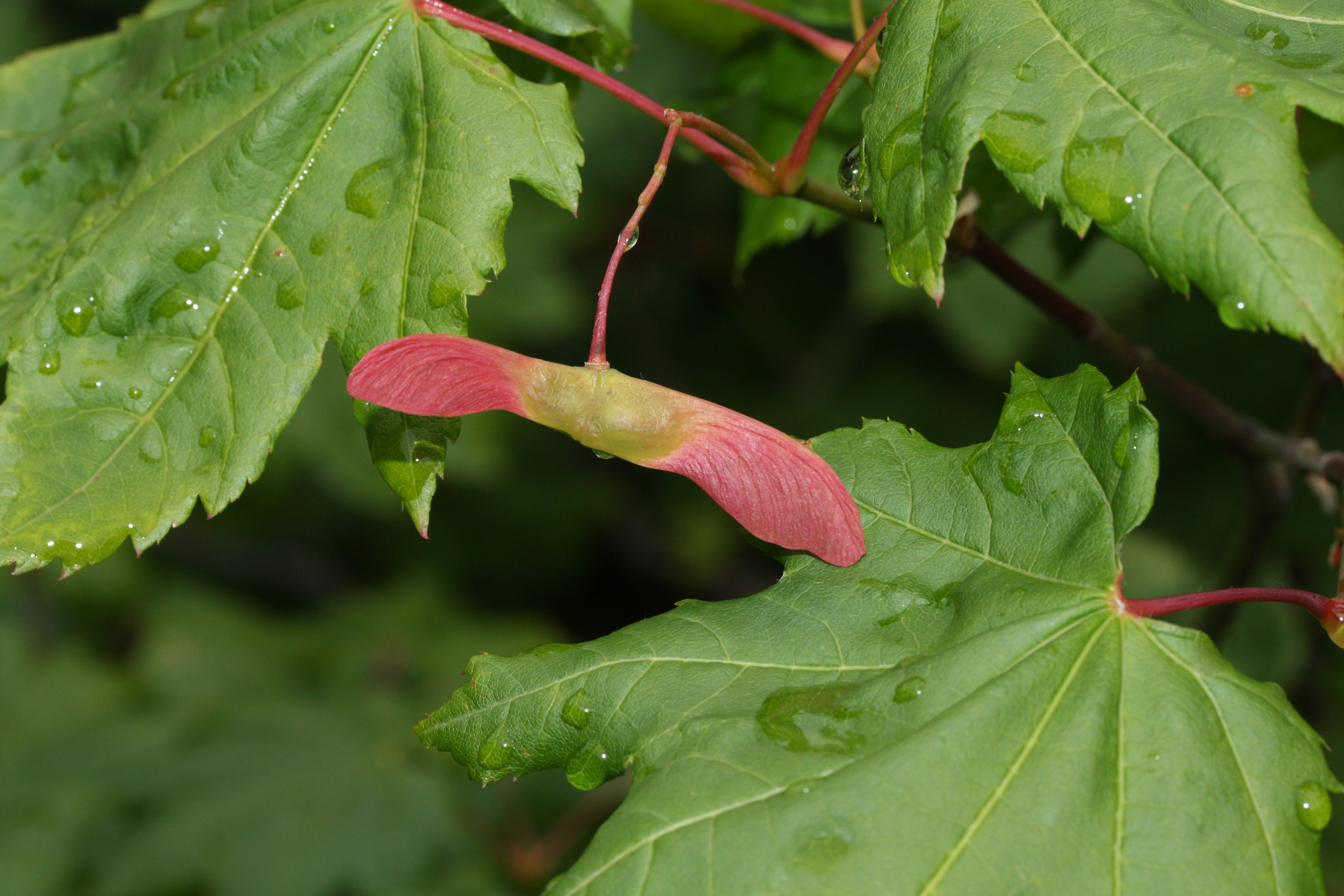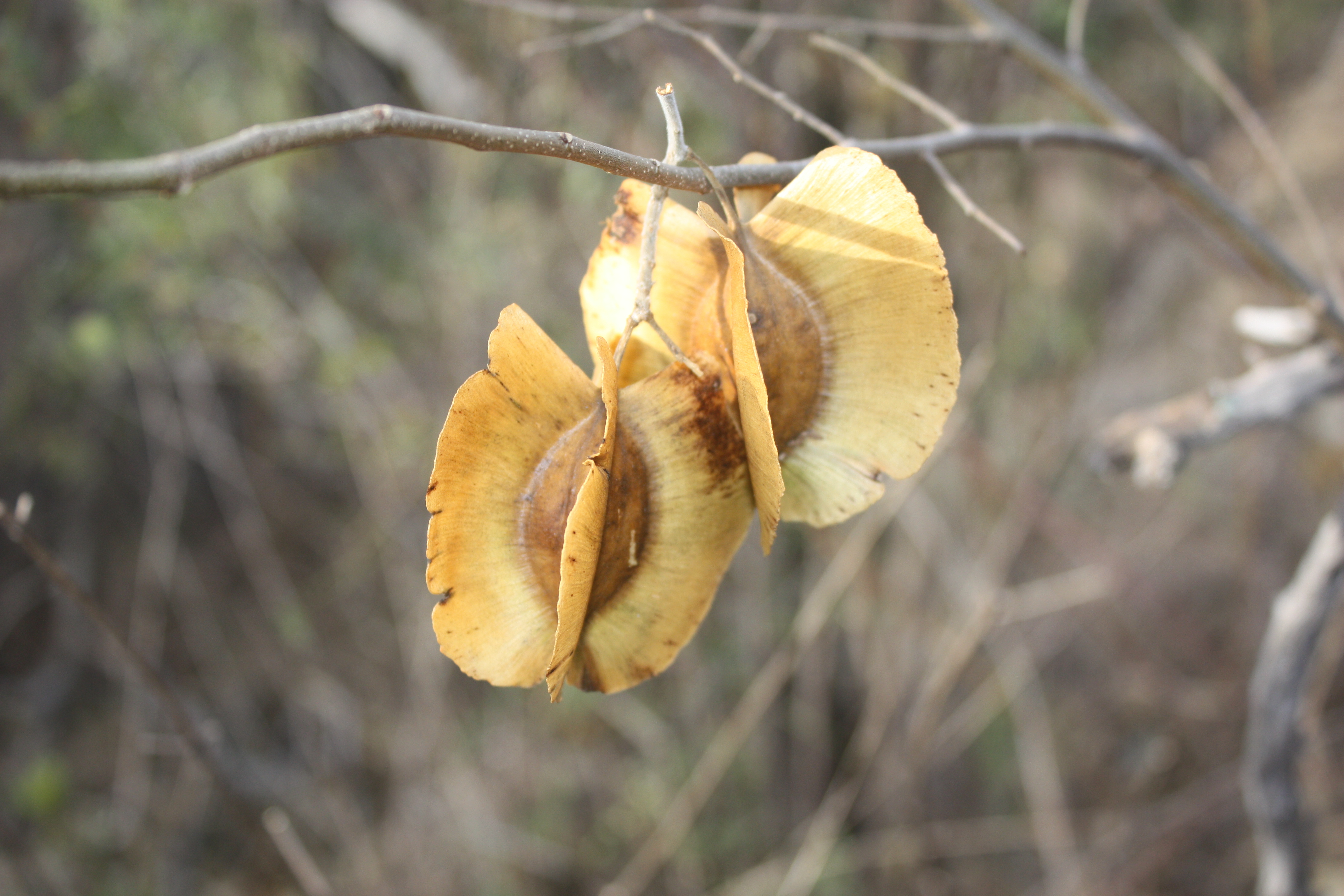samara (fruit) on:
[Wikipedia]
[Google]
[Amazon]

 A samara (, ) is a winged
A samara (, ) is a winged
File:TripleSycamoreSamara.png, Unusual group of three samaras of sycamore maple (''
 A samara (, ) is a winged
A samara (, ) is a winged achene
An achene (; ), also sometimes called akene and occasionally achenium or achenocarp, is a type of simple dry fruit produced by many species of flowering plants. Achenes are monocarpellate (formed from one carpel) and indehiscent (they do not ope ...
, a type of fruit
In botany, a fruit is the seed-bearing structure in flowering plants that is formed from the ovary after flowering.
Fruits are the means by which flowering plants (also known as angiosperms) disseminate their seeds. Edible fruits in particu ...
in which a flattened wing of fibrous, papery tissue develops from the ovary wall. A samara is a simple dry fruit, and is indehiscent (not opening along a seam). The shape of a samara enables the wind to carry the seed farther away from the tree than regular seeds would go, and is thus a form of anemochory
In Spermatophyte plants, seed dispersal is the movement, spread or transport of seeds away from the parent plant.
Plants have limited mobility and rely upon a variety of dispersal vectors to transport their seeds, including both abiotic vectors, ...
.
In some cases the seed is in the centre of the wing, as in the elm
Elms are deciduous and semi-deciduous trees comprising the flowering plant genus ''Ulmus'' in the plant family Ulmaceae. They are distributed over most of the Northern Hemisphere, inhabiting the temperate and tropical-montane regions of North ...
s (genus ''Ulmus''), the hoptree (''Ptelea trifoliata
''Ptelea trifoliata'', commonly known as common hoptree, wafer ash, stinking ash, and skunk bush, is a species of flowering plant in the citrus family (Rutaceae). It is native to North America, where it is found in Canada, Mexico, and the United ...
''), and the bushwillow
''Combretum'', the bushwillows or combretums, make up the type genus of the family Combretaceae. The genus comprises about 272 species of trees and shrubs, most of which are native to tropical and southern Africa, about 5 to Madagascar, but the ...
s (genus ''Combretum
''Combretum'', the bushwillows or combretums, make up the type genus of the family Combretaceae. The genus comprises about 272 species of trees and shrubs, most of which are native to tropical and southern Africa, about 5 to Madagascar, but th ...
'').
In other cases the seed is on one side, with the wing extending to the other side, making the seed autorotate as it falls, as in the maple
''Acer'' () is a genus of trees and shrubs commonly known as maples. The genus is placed in the family Sapindaceae.Stevens, P. F. (2001 onwards). Angiosperm Phylogeny Website. Version 9, June 2008 nd more or less continuously updated since http ...
s (genus '' Acer'') and ash tree
''Fraxinus'' (), commonly called ash, is a genus of flowering plants in the olive and lilac family, Oleaceae. It contains 45–65 species of usually medium to large trees, mostly deciduous, though a number of subtropical species are evergree ...
s (genus ''Fraxinus
''Fraxinus'' (), common name, commonly called ash, is a genus of flowering plants in the olive and lilac family, Oleaceae. It contains 45–65 species of usually medium to large trees, mostly deciduous, though a number of Subtropics, subtropic ...
'').
There are also single-wing samara such as mahogany
Mahogany is a straight-grained, reddish-brown timber of three tropical hardwood species of the genus ''Swietenia'', indigenous to the AmericasBridgewater, Samuel (2012). ''A Natural History of Belize: Inside the Maya Forest''. Austin: Unive ...
(genus Swietenia
''Swietenia'' is a genus of trees in the chinaberry family, Meliaceae. It occurs natively in the Neotropics, from southern Florida, the Caribbean, Mexico and Central America south to Bolivia. The genus is named for Dutch-Austrian physician Ge ...
) which have a shape that enables fluttering.
Some species that normally produce paired samaras, such as ''Acer pseudoplatanus
''Acer pseudoplatanus'', known as the sycamore in the British Isles and as the sycamore maple in the United States, is a species of flowering plant in the Sapindus, soapberry and lychee family Sapindaceae. It is a large deciduous, broad-leaved ...
'', can also produce them in groups of three or four.
Acer pseudoplatanus
''Acer pseudoplatanus'', known as the sycamore in the British Isles and as the sycamore maple in the United States, is a species of flowering plant in the Sapindus, soapberry and lychee family Sapindaceae. It is a large deciduous, broad-leaved ...
''. Normally, they are in pairs.)
File:Starr_040601-0006_Fraxinus_uhdei.jpg, Seeds of the tropical ash (''Fraxinus uhdei
''Fraxinus uhdei'', commonly known as tropical ash or Shamel ash, is a species of tree native to Mexico and Central America. It is commonly planted as a street tree in Mexico and the southwestern United States. It has also been planted and sprea ...
'')
File:Ptelea_trifoliata_20050606_635_part.jpg, The hoptree (''Ptelea trifoliata
''Ptelea trifoliata'', commonly known as common hoptree, wafer ash, stinking ash, and skunk bush, is a species of flowering plant in the citrus family (Rutaceae). It is native to North America, where it is found in Canada, Mexico, and the United ...
'')
File:Ulmus-pumila-samaras.jpg, The Siberian elm (''Ulmus pumila
''Ulmus pumila'', the Siberian elm, is a tree native to Asia. It is also known as the Asiatic elm and dwarf elm, but sometimes miscalled the 'Chinese Elm' ('' Ulmus parvifolia''). ''U. pumila'' has been widely cultivated throughout Asia, No ...
'')
In culture
A samara is sometimes called a ''key'' and is often referred to as a '' wingnut'', ''helicopter
A helicopter is a type of rotorcraft in which lift and thrust are supplied by horizontally spinning rotors. This allows the helicopter to take off and land vertically, to hover, and to fly forward, backward and laterally. These attributes ...
'', '' whirlybird'', ''whirligig
A whirligig is an object that spins or whirls, or has at least one part that spins or whirls. It can also be a pinwheel, spinning top, buzzer, comic weathervane, gee-haw, spinner, whirlygig, whirlijig, whirlyjig, whirlybird, or simply a whirly ...
'', ''polynose'', or, in the north of England, a ''spinning jenny
The spinning jenny is a multi- spindle spinning frame, and was one of the key developments in the industrialization of textile manufacturing during the early Industrial Revolution. It was invented in 1764 or 1765 by James Hargreaves in Sta ...
''. During the autumn months, they are a popular source of amusement for children (and adults) who enjoy tossing them in the air and watching them spin to the ground.
References
Further reading
* ''Spinning Flight : Dynamics of Frisbees, Boomerangs, Samaras and Skipping Stones'', Ralph Lorenz, Copernicus New York, September 2006 Fruit morphology {{Fruit-stub